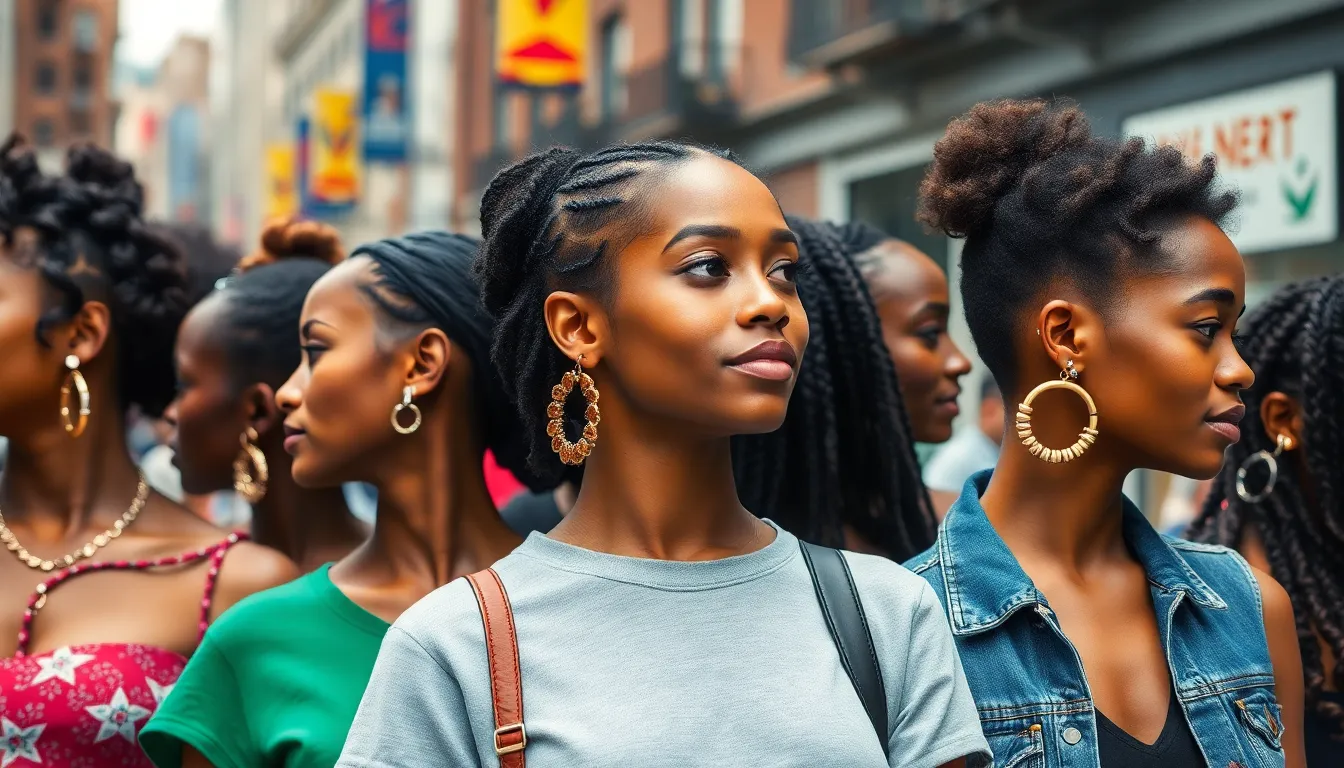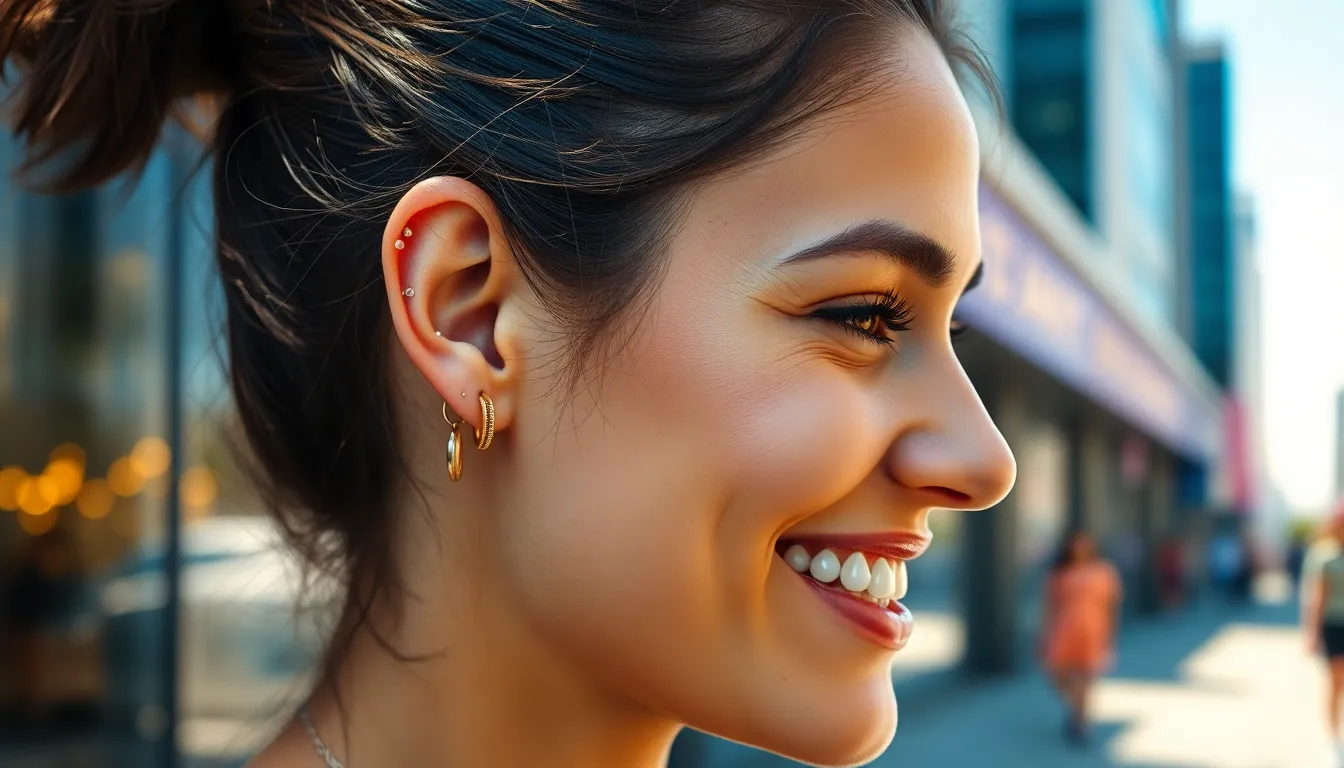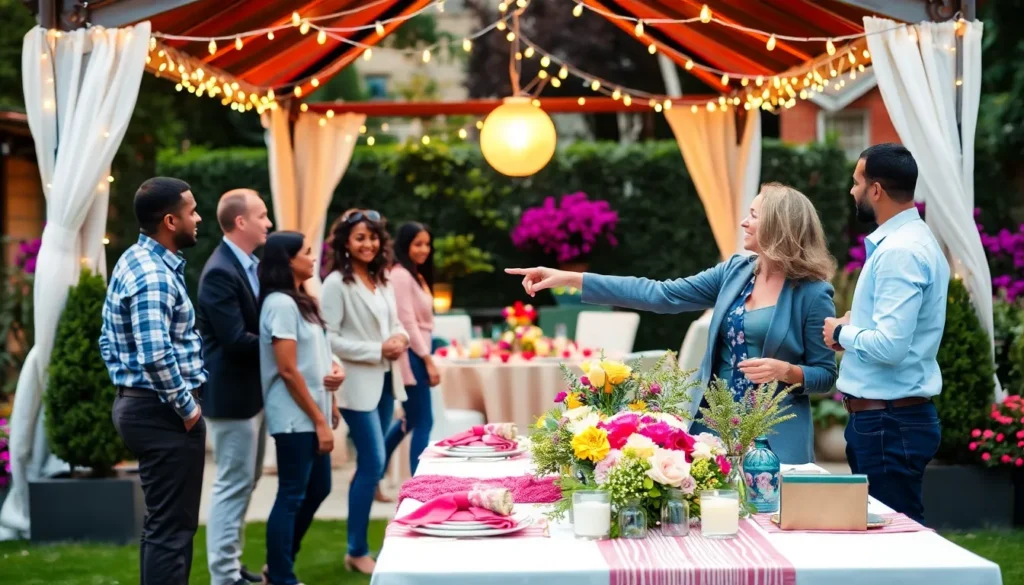Ear piercing isn’t just about adding a little bling to your lobes; it’s a chance to express personality and style. Whether you’re a minimalist seeking a single stud or a trendsetter ready to rock a curated ear full of hoops and gems, the choices are endless. And let’s face it—who doesn’t want to turn heads with a dazzling new look?
Table of Contents
ToggleTypes of Ear Piercing Inspiration
Ear piercings offer diverse styles for personal expression, ranging from classic to modern trends. The right choice caters to individual preferences, ensuring a unique look.
Classic Ear Piercing Options
Traditional piercings remain popular for their timeless appeal. Standard lobe piercings sit at the base of the ear, serving as an ideal starting point. Cartilage piercings add a touch of elegance, positioned higher on the ear. Stud earrings suit those who prefer a subtle touch, while small hoops provide a classic update. For a bolder statement, double or triple lobe piercings allow for multiple jewels in one earlobe. These classic options anchor the ear piercing journey for many individuals, establishing a foundation of style.
Trendy and Creative Styles
Fashion-forward individuals often explore innovative piercing styles. Helix piercings, trendy at the ear’s rim, showcase unique jewelry. Industrial piercings, which involve two holes connected by a single bar, convey an edgy aesthetic. Conch piercings, positioned in the inner ear, provide a canvas for larger statement pieces. Stacked earrings create visual interest by combining various styles, enabling an expressive look. Additionally, themed jewelry, such as celestial or nature-inspired designs, adds a personal touch. Exploring these creative options can help individuals cultivate their signature style.
Cultural Significance of Ear Piercing


Ear piercing carries rich cultural meanings across various societies. This practice symbolizes more than just aesthetics; it often reflects identity, maturity, or social status.
Historical Perspectives
In many ancient civilizations, ear piercing served as a rite of passage. For example, the Egyptians adorned themselves with gold earrings, signifying wealth and influence. Indigenous peoples in Africa and the Americas used piercings as spiritual markers, connecting them to their ancestors. In some Asian cultures, ear piercings indicated social hierarchy, with certain styles reserved for nobility. These historical practices illustrate how ear piercing has been ingrained in cultural narratives for centuries.
Modern Interpretations
Contemporary interpretations of ear piercing reflect individuality and personal expression. Today, many people choose piercings not only for style but also for self-identity. The trend of stacking multiple earrings allows individuals to create unique combinations that represent their personal narratives. Additionally, themed jewelry has emerged, enabling wearers to express their interests or affiliations. Ear piercing now exists as a versatile form of art, resonating with both traditional and modern values.
Popular Ear Piercing Trends
Ear piercing trends constantly evolve, offering diverse options for self-expression and style. Current favorites reflect personal choices and cultural significance.
Minimalist Piercings
Minimalist piercings focus on subtlety. Tiny studs or delicate hoops enhance the beauty of the ear without overpowering the wearer’s look. Minimalists often prefer materials like gold or silver, which exude understated elegance. This approach suits those who appreciate a refined aesthetic. Simple designs maintain versatility, allowing wearers to pair with various outfits, from casual to formal. Each piercing often highlights individuality while maintaining a classic appeal.
Multiple Ear Piercing Styles
Multiple ear piercing styles allow for creative combinations. Stacking earrings, such as studs, huggies, and cuffs, creates stunning visual impact. Some opt for a mix of shapes and sizes to craft a distinctive ear arrangement. Layers add depth and a personal narrative, making every style unique. These trends embrace playfulness and experimentation, encouraging wearers to showcase their personality. Mixing textures and colors elevates overall style, leading to an eye-catching display.
Choosing the Right Ear Piercing
Choosing an ear piercing involves several key factors that help personalize the experience. Individual style preferences guide decision-making; someone might favor minimalist elegance while another opts for bold statements. The anatomy of the ear significantly impacts choices as well. For example, certain piercings suit various ear shapes and sizes, enhancing the overall look. Pain tolerance varies; understanding this aspect can help determine the appropriate piercing type. Jewelry material is another consideration; options like surgical steel, gold, or titanium cater to different skin sensitivities and aesthetic desires.
Consulting a professional ensures an informed and safe experience. Experienced piercers offer valuable insights into healing times and aftercare. They also guide individuals on appropriate jewelry options that align with personal style and comfort. Researching reputable piercing studios builds confidence, ensuring a clean and safe environment. Additionally, professionals can provide suggestions tailored to specific ear features, empowering individuals to make choices that suit their style and lifestyle. Seeking expert advice fosters a successful ear piercing journey and enhances the overall experience.
Ear piercing serves as a powerful medium for self-expression and individuality. With an array of styles and trends available, individuals can easily find inspiration that resonates with their personal aesthetic. Whether opting for classic piercings or modern combinations, the choices reflect deeper meanings and cultural significance.
As trends evolve, so do the possibilities for creativity, allowing wearers to craft unique looks that tell their stories. By considering personal preferences and consulting professionals, anyone can embark on their ear piercing journey with confidence. Embracing this art form not only enhances one’s appearance but also celebrates the rich history and cultural narratives behind it.









